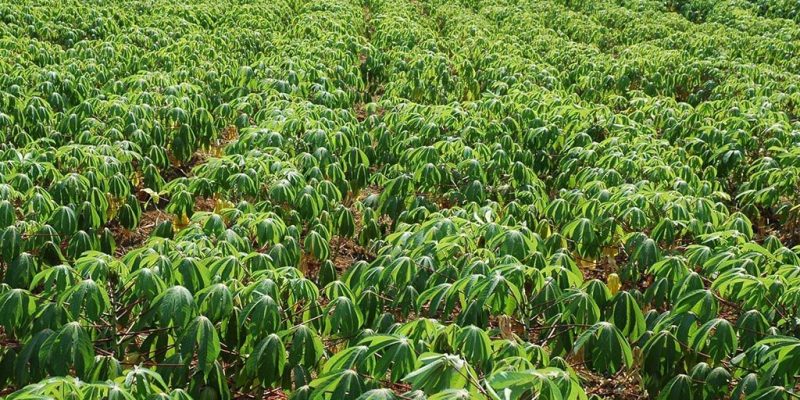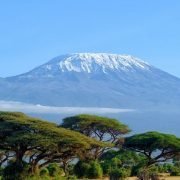Tanzania is one of the biggest cassava producers in Africa. About 655,700 hectares (ha) of lands
It is a major staple in most semi-arid and drought-stricken areas. For this reason, it has traditionally been considered a famine.
Timely access to quality seed is a major challenge in the production of the food crop in Tanzania.
A mobile application for real-time tracking of cassava seed production developed by the International Institute of Tropical Agriculture (IITA) for Nigeria is now available in Tanzania as part of efforts to address this challenge.
The application, known as Cassava SeedTracker, provides real-time information on seed variety, quantity and availability; and facilitates timely access to seed markets.
It enables producers to register their seed crops with regulatory authorities, who do electronic certification of seeds.
It helps those who need quality seeds to locate suppliers and arrange for purchases. Though SeedTracker is a
The app was first developed by a team at IITA-Nigeria as led by Lava Kumar, a virologist and Head of the Germplasm Health Unit under the Building an Economically Sustainable, Integrated Seed System for Cassava in Nigeria (BASICS) project.
The goal was to apply 21st century ICT technology to improve quality and efficiency of cassava seed production.
IITA is introducing the app in Tanzania in partnership with the Tanzania Official Seeds Certifica- tion Institute (TOSCI) and Mennonite Economic Development Associates (MEDA).
According to James Legg, IITA plant Pathologist, SeedTracker will support farmers to access quality certified planting material (seed) from producers and for producers; it will allow them to get markets for their produce.
The app will also allow authorities to certify the seed. “We are excited that the SeedTracker is now ‘live’ in Tanzania. However, IITA will continue to work with partners working for the development of cassava in the country to see that all of the app’s 21st century promise is fully realized,” he said.
IITA has been working with TOSCI on developing quality standards for cassava seed in the country to ensure that seed produced is healthy and free of viruses.
This is because farmers have been grappling with two viral diseases cassava mosaic disease and cassava brown streak disease that
Researchers have identified several ways to halt the spread of the two diseases, including the development of high-yielding disease resistant varieties and setting up systems to multiply and distribute healthy seed.
Cassava is a mainstay for subsistence farmers on three continents because it survives in shoddy soil and weathers droughts and its roots can be harvested at any time of the year.
But there are wide geographical disparities in its yields. Varieties grown in Africa average 8.8 tonnes of usable root mass per hectare, compared with 13 tonnes per hectare in the Americas and 22 tonnes per hectare in Asia (see ‘A starchy staple’).
Researchers have long attempted to improve the situation for African farmers by importing Asian and South American varieties.
But these foreign plants, which lack defences against African pathogens, have fared poorly. And breeding hardier hybrid varieties has proved challenging.
It takes about five years of breeding to produce a worthy hybrid. Following each cross, breeders must grow the offspring for about a year and then assess the quality of the roots, which requires them to harvest, soak, dice and dry the experimental plants before weighing the starch that remains.
Even then, a high-yielding plant might founder when exposed to harsh environments.
This inefficient breeding process wastes land, labour and money. And although cassava provides one of the largest sources of carbohydrates to people in Africa, corn, wheat and rice vastly surpass it in terms of global sales and research grants.
The Next Generation Cassava Breeding project aims to accelerate the creation of hardier cassava varieties and improve yields by using genetic sequencing to identify winning hybrids.
Like in most countries in tropical Africa and elsewhere in the world, cassava is a major subsistence crop in Tanzania after maize, especially in the semi-arid areas where, due to its drought tolerance, it is considered a famine reserve when cereals fail.
Most of the cassava production of Tanzania (84%) is for human consumption, with the remainder being used for animal feed, local brew and starch production The main production areas of cassava in Tanzania are Mwanza, Mtwara, Lindi, Shinyanga, Tanga Ruvuma, Mara, Kigoma, Coast regions; and the Zanzibar islands of Unguja and Pemba.
According to the Tanzania Commission for Science and Technology (COSTECH), cassava production is well below its potential yield of 20t/ha.
Low yields arise because the majority of farmers use local varieties with low genetic potential and susceptibility to major diseases an
In 2012, the government, through COSTECH, funded a 4-year project titled “Improving Cassava Productivity and Utilisation in Tanzania”.
The purpose of the project was to enhance sustainable productivity and competitiveness of cassava in Tanzania through improved cassava production, marketing and utilisation.
The project particularly sought to promote wide use of quality planting materials of improved cassava varieties, foster value chain technologies and innovations for dried cassava peel and high-quality cassava flour.
It further sought to develop and disseminate improved cas- sava varieties with dual resis- tance to Cassava Brown Streak Disease (CBSD) and Cassava Mosaic Disease (CMD) and optimise cassava fertiliser requirement.
Experts have further observed during the implementation of the project that the crop’s peel can also be used with sunflowers and other supplements to maximize milk production among livestock.

















Comments